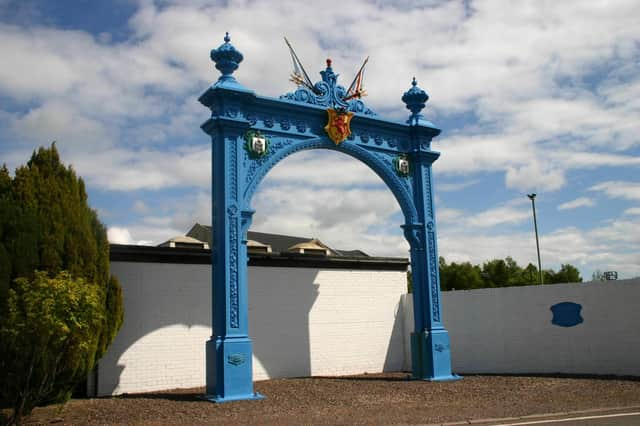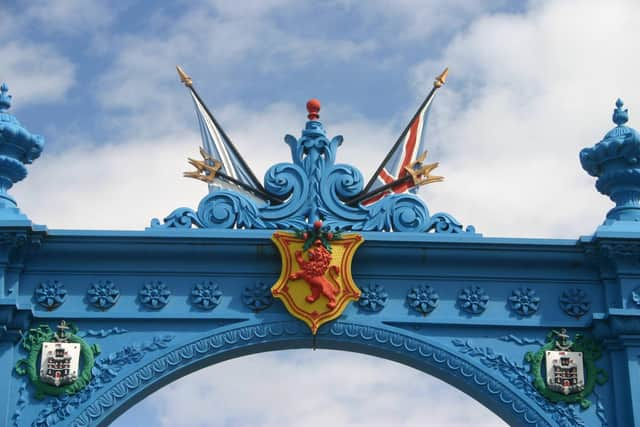Ian Scott: The famous blue gates of Grahamston


Occupying most of the Meadows, the International Exhibition of Industry, Science and Art showcased the new wonders of the world of technology drawing tens of thousands to visit the huge exhibition hall lit by a dazzling array of 3,200 electric lights.
The opening on May 6, 1886 was performed by Queen Victoria’s grandson Prince Albert Victor and the exhibition lasted for five months before the vast array of exhibits (over 20,000 individual items) and the buildings were removed.
Advertisement
Hide AdAdvertisement
Hide AdThe outstanding feature of the exhibition was the re-creation of a 17th century Edinburgh street with reproductions of famous lost buildings like the famous Netherbow Port.


Because permanent building was not allowed in the Meadows everything had to be removed and very little now survives to remind us of the great event.
There is a whalebone arch in the park and entrance pillars with unicorns and in Falkirk the great blue gates which today stand outside the former Carron Phoenix factory.
Weighing in at 20 tons and measuring 26 by 20 feet they were said to be the biggest iron gates in the world, designed and cast not at Carron but in WT Mitchell’s Grahamston Foundry.
Advertisement
Hide AdAdvertisement
Hide AdThe foundry had been operating for less than 20 years before this particular commission and we can be sure that the firm’s reputation soared when people saw the intricate decoration of the triumphal arch which included the Royal Coat of Arms and the arms of the City of Edinburgh as well as urns, finials and columns.
A second, near identical, arch was cast around the same time which was located in the People’s Park in Grimbsby until 1943.
I’m not sure which came first – maybe the Grimsby folk visited Edinburgh and were impressed or possibly the Festival organisers had been to Humberside looking for bright ideas!
After the Festival the Edinburgh gates were dismantled and returned to Grahamston where they stood at the end of Gowan Avenue until 2002.
Advertisement
Hide AdAdvertisement
Hide AdThe foundry had closed a couple of years earlier and the new owners of the site were not interested in their historic acquisition.
Enter Roger Clark, the then Managing Director of Carron Phoenix and a great admirer of the skills of Falkirk foundry men.
He arranged for the arch to be dismantled and beautifully restored before its re-erection on the banks of the Carron near the Phoenix factory.
It is now ‘B’ listed by Historic Environment Scotland and the plaque on the wall tells us that it is there as a tribute to those glory days when Falkirk led the world in cast iron design.
Advertisement
Hide AdAdvertisement
Hide AdSadly the company closed its Falkirk operations a few years ago despite its high productivity and full order book.Unfortunately global capitalism will have its way and the products are now made in Slovenia. Where all of this leaves the gates I’m not sure.
They are out of sight up the road that runs on the north bank of the Carron but I know they are not out of the minds of those who cherish our iron heritage.
Thank you for reading this article on our free-to-read website. We're more reliant on your support than ever as the shift in consumer habits brought about by Coronavirus impacts our advertisers.
Please consider purchasing a subscription to our print newspaper to help fund our trusted, fact-checked journalism.
Comment Guidelines
National World encourages reader discussion on our stories. User feedback, insights and back-and-forth exchanges add a rich layer of context to reporting. Please review our Community Guidelines before commenting.
